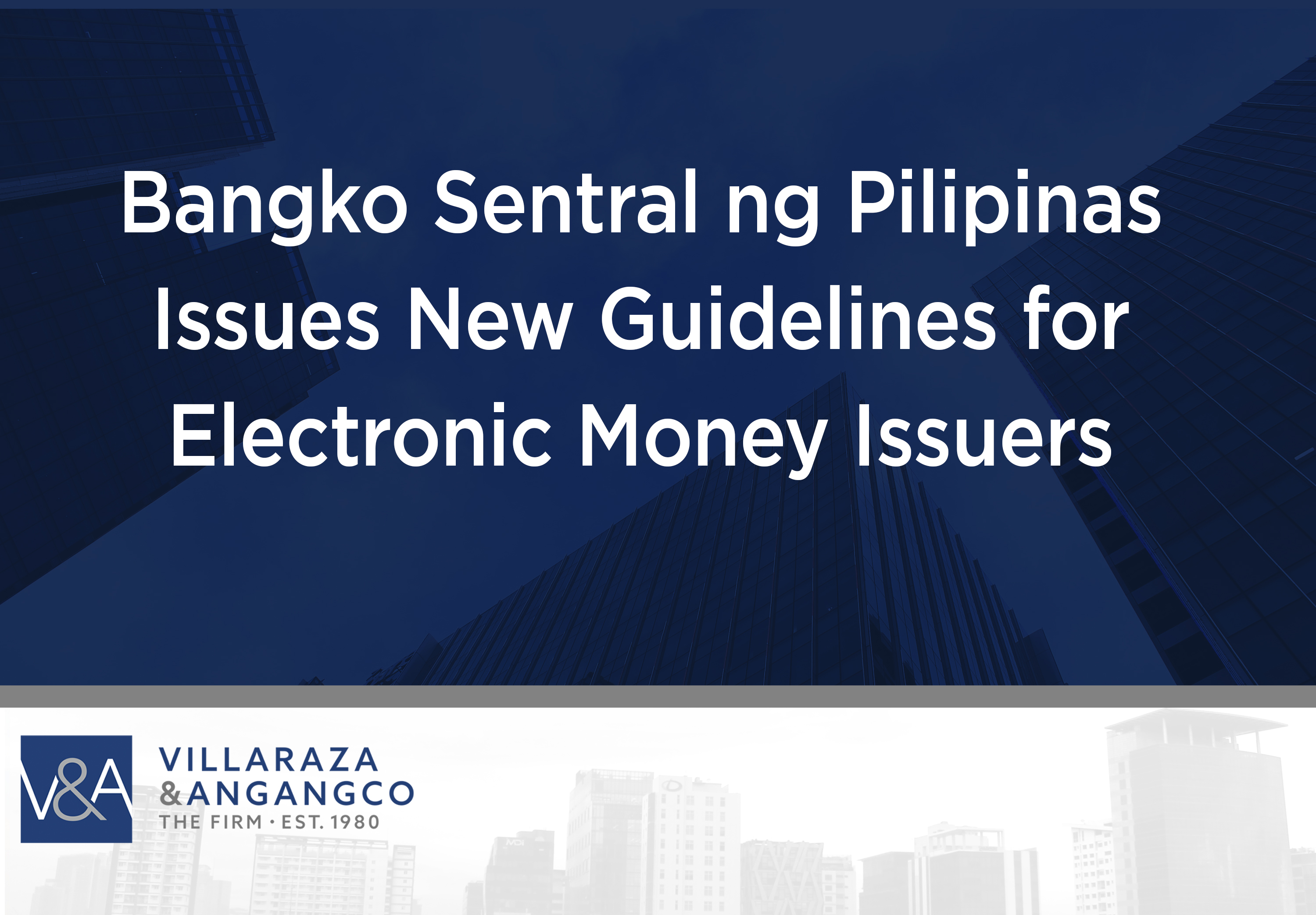

The Bangko Sentral ng Pilipinas (the “BSP”) recently issued Circular No. 1166 Series of 2023 dated 7 February 2023 (“BSP Circular No. 1166” or the “EMI Guidelines”) amending parts of Sections 402-S, 402-N, and 702-Q of the Manual of Regulations for Non-Bank Financial Institutions (“MORNBFI”) and Section 702 of the Manual of Regulations for Banks (the “MORB”) in relation to regulations on Electronic Money Issuers (“EMIs”) including EMI banks and EMI Non-Bank Financial Institutions (“NBFI”).
Prior to the EMI Guidelines, and owing to the fluid nature of digital transactions, it has been criticized that there is an inadequate legal infrastructure and/or regulatory framework that would address the inherent risk exposures of participants in the e-money business. The EMI Guidelines is a welcome development to the industry - through the EMI Guidelines, the BSP aims to address the attendant risks that are inherent in financial services provided by EMIs. It would be interesting to see how the new EMI Guidelines will be able to contribute to the current shape of the e-money business.
Amongst the substantial changes introduced by the EMI Guidelines is the inclusion of a more defined scope which limits the EMI Guidelines to BSP Supervised Financial Institutions (“BSFIs”) that issue e-money and are engaged in the e-money business. It now expressly excludes entities which issue e-money under a closed-loop electronic wallet system or a system wherein e-money is issued exclusively as payment to the issuer itself.
The previously vague definition of e-money has also been updated to “an electronically-stored monetary value that is: (i) maintained in a non-interest bearing non-deposit transaction account; (ii) denominated in or pegged to Philippine Peso or other foreign currencies; (iii) pre-funded by customers to enable payment transactions; (iv) accepted as a means of payment by issuers and by other person or entities including merchant/sellers; (v) issued against receipt of funds of an amount equal to the monetary value issued; (vi) represented by a claim on its issuer; and (vii) withdrawable in cash or cash equivalent or transferable to other accounts/instruments that are withdrawable in cash.”
Tightening BSP’s rules on EMIs, new capitalization requirements are set in place - PhP200,000,000.00 for large scale EMIs and PhP100,000,000.00 for small scale EMIs, i.e. EMI Banks or EMI NBFIs that have a twelve (12) month average aggregated inflow and outflow transaction of at least PhP25 Billion is considered a large scale EMI.
Meanwhile, new liquidity requirements are also implemented – BSFIs with outstanding e-money balance of at least PhP100,000,000.00 must maintain an unencumbered liquid assets composed of (i) at least 50% of the outstanding e-money balance, held in trust for specific purpose of e-money balance liquidation; and (ii) the remaining percentage of outstanding e-money balance shall be held through specified assets (e.g., bank deposits, government securities, balance in settlement account with BSP, and other liquid assets as the BSP allows, earmarked for liquidity requirements). On the other hand, BSFIs with outstanding E-Money balance below PhP100,000,000.00 have the option of following the above requirements or holding liquid assets equivalent to the total amount of outstanding e-money balance through bank deposits specifically earmarked for liquidity requirements, or holding other liquid assets as the BSP allows.
It is noteworthy that unlike the previous requirements under the MORNBFI and MORB, aggregate limits now follow pre-determined limits based on client categorization process done through institutional risk assessment and customer due diligence.
The EMI Guidelines also provides for other significant changes/update to existing rules including (i) revoking the EMI license of BSFIs that do not commence operations within six (6) months from the approval of the EMI license; (ii) designating minimum systems and control safeguards, in addition to that provided under current rules; (iii) reiterating that e-money should only be issued and redeemed at face value; (iv) designating safeguards for consumer protection, in addition to that provided under current rules; (v) mandating disclosure requirements; (vi) mandating participation in Automated Clearing House; (vii) updating reportorial requirements; (viii) clarifying sanctions for violations of the EMI Guidelines; (xi) reiterating the registration requirement with the Anti-Money Laundering Counsel; and (xii) updating guidelines on outsourcing of EMIs, among other changes/updates.
EMIs have one (1) year from the effectivity of the EMI Guidelines to comply with the new rules, subject to the submission of an accomplished gap assessment specifying the plan of actions an EMI will undertake in order to conform with the new regulations.
On a final note, the current EMI Guidelines does not lift the moratorium on BSP’s issuance of EMI license.
~o0o~